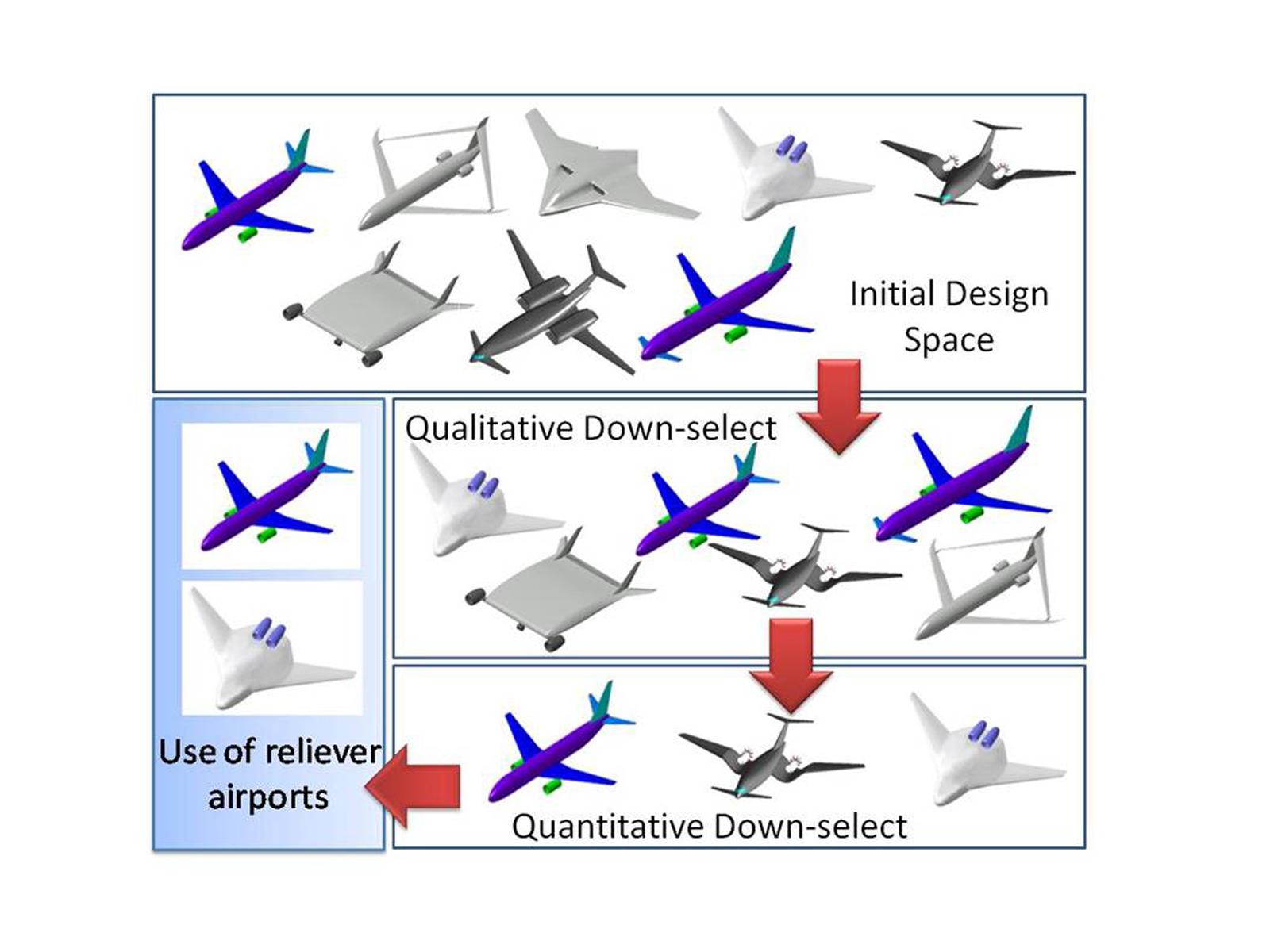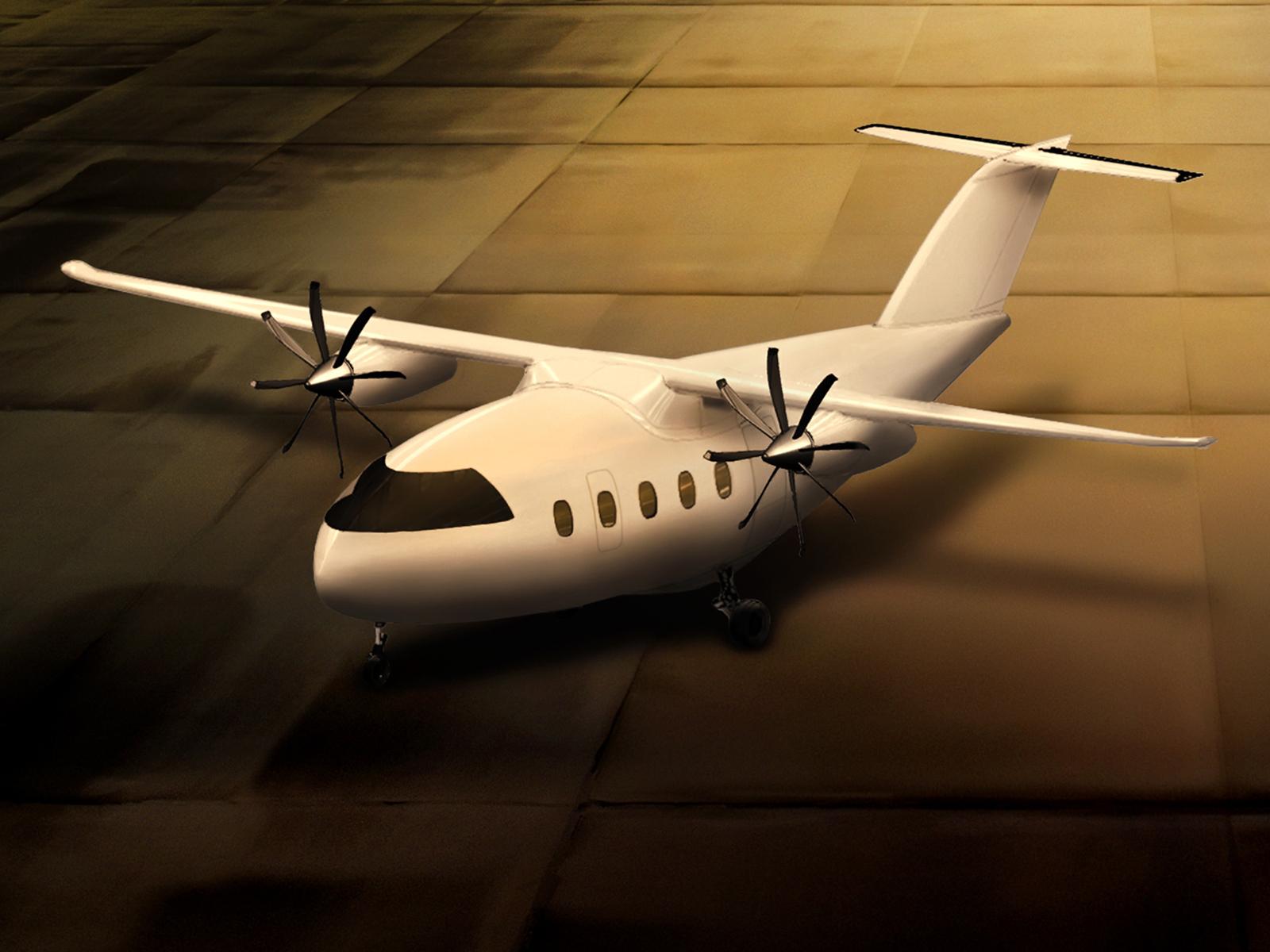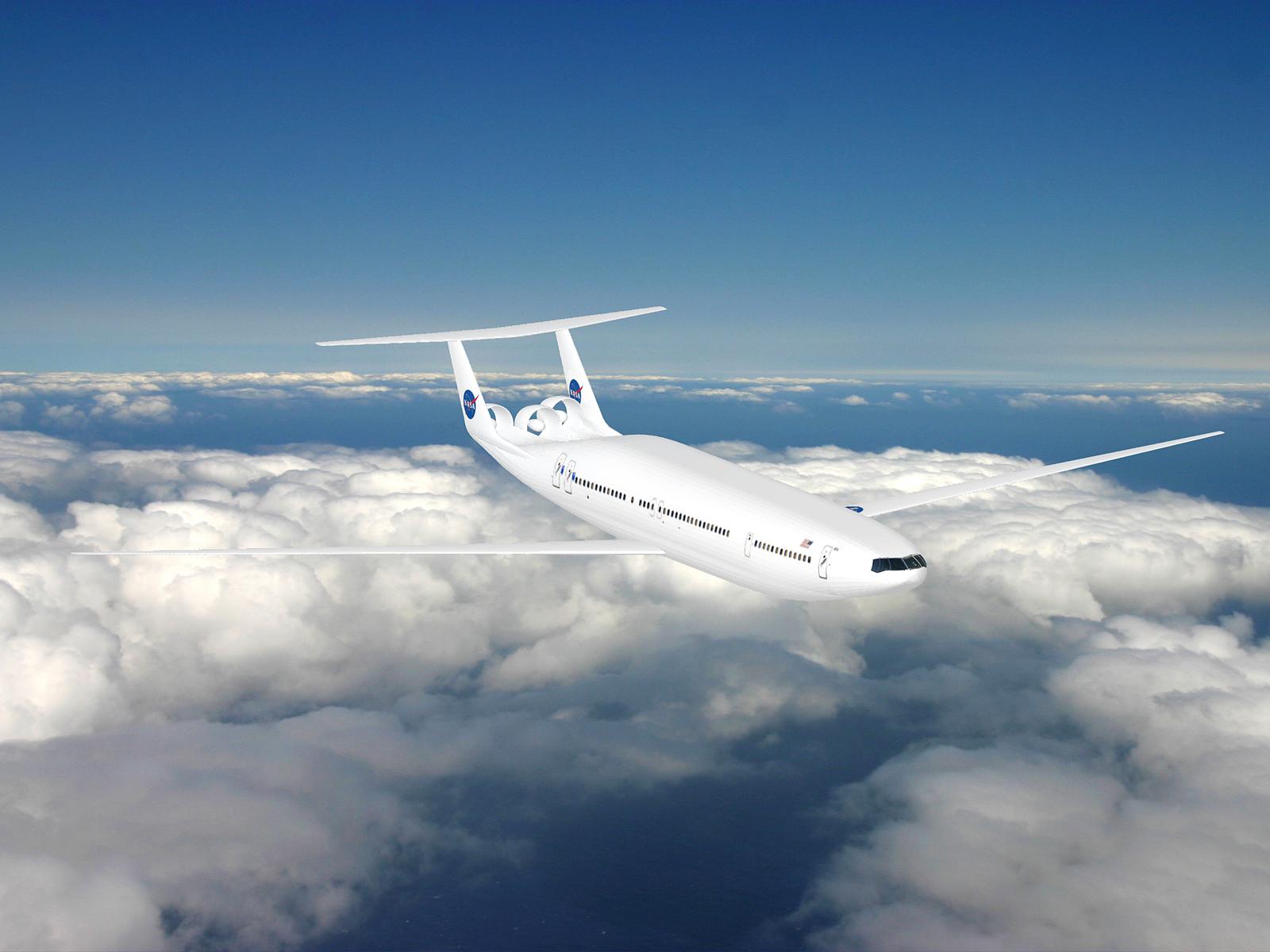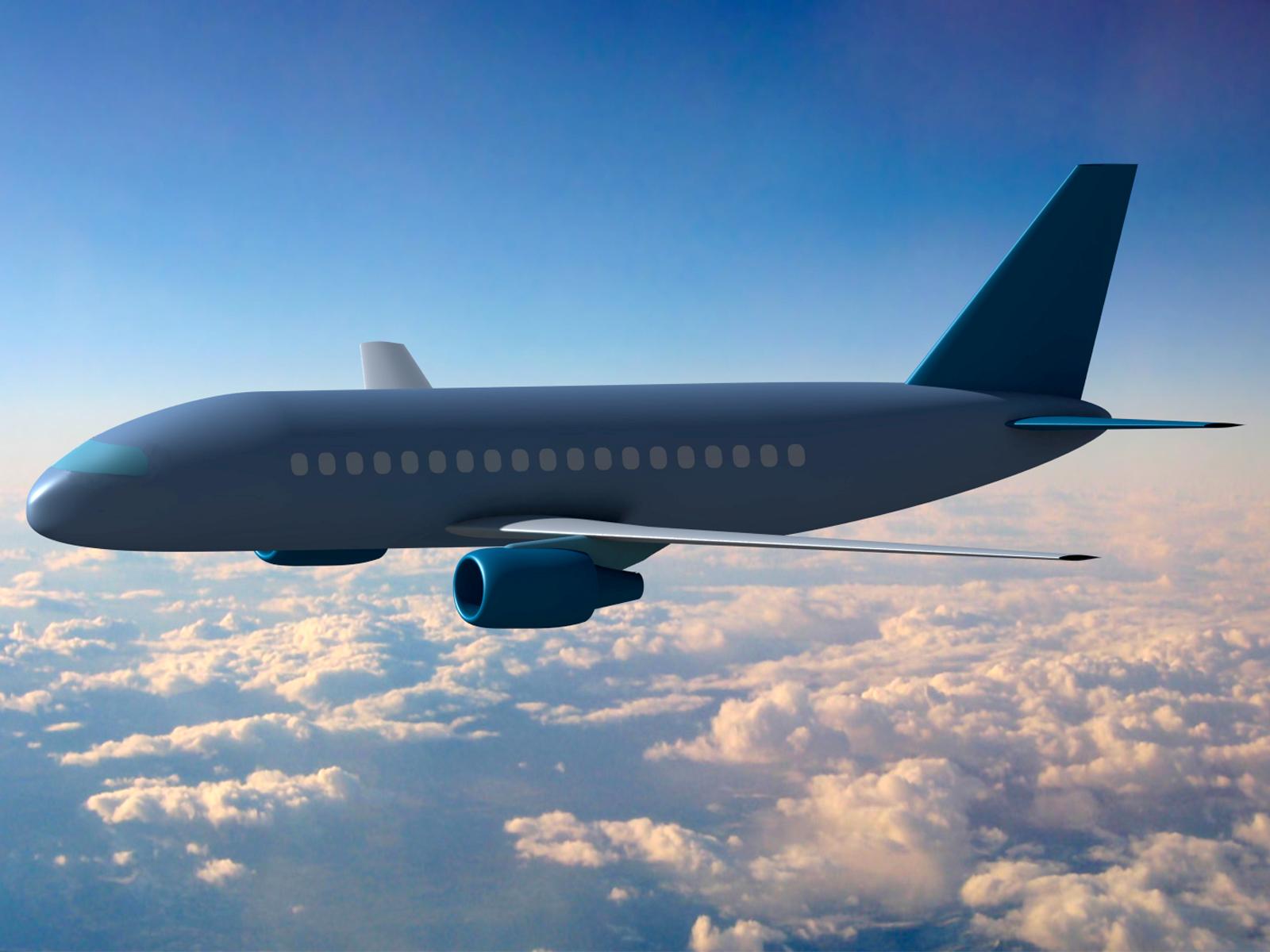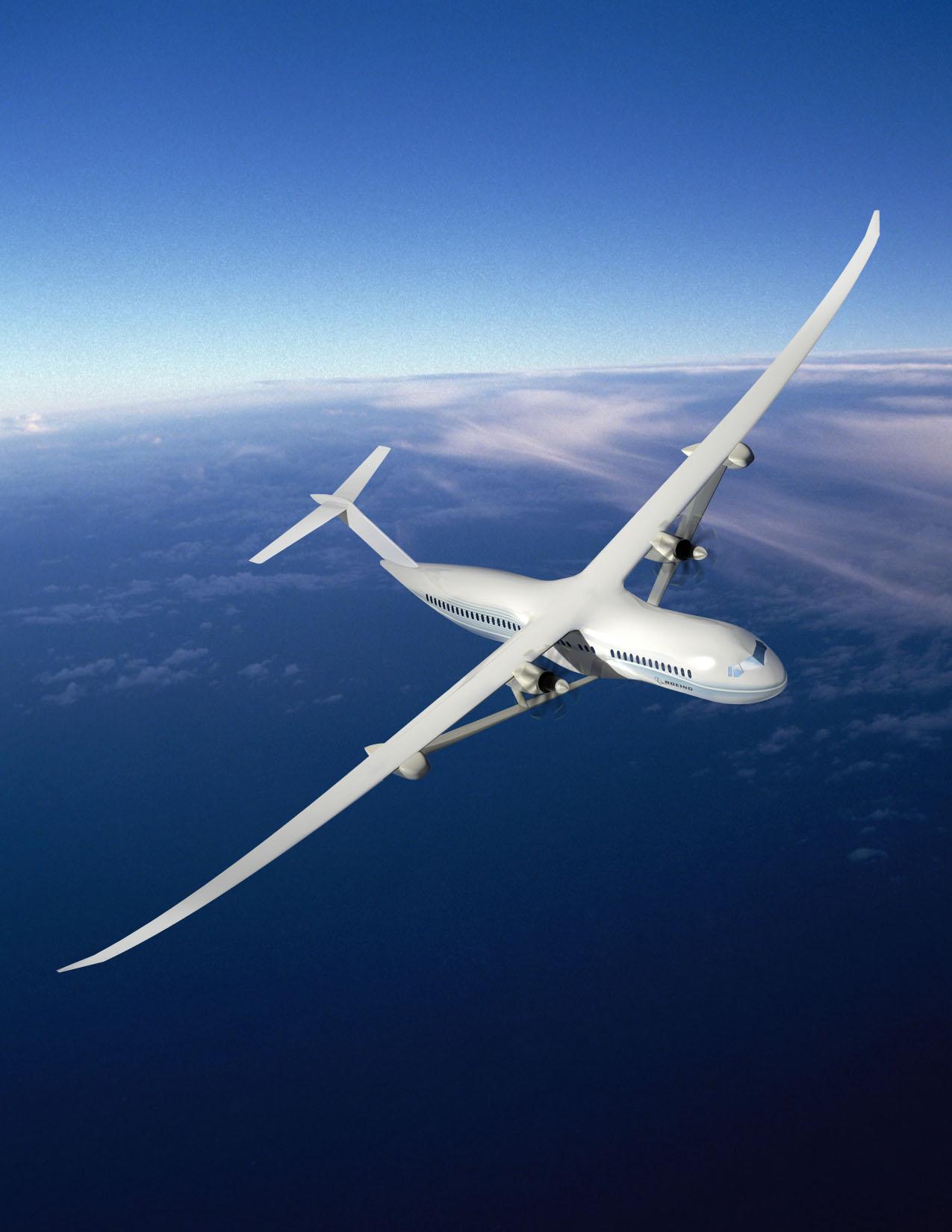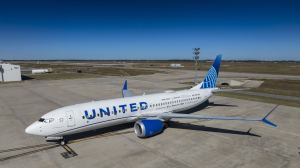An 18-month NASA research effort to visualize future airplanes that carry passengers has produced some ideas that at first glance may appear to be old fashioned. Instead of exotic new designs seemingly borrowed from science fiction, familiar shapes dominate the pages of advanced concept studies which four industry teams completed for NASA’s Fundamental Aeronautics Program in April 2010.
Look more closely at these concepts for airplanes that may enter service 20 to 25 years from now and you’ll see things that are quite different from the aircraft of today.
Just beneath the skin of these concepts lie breakthrough airframe and propulsion technologies designed to help the commercial aircraft of tomorrow fly significantly quieter, cleaner, and more fuel-efficiently, with more passenger comfort, and to more of America’s airports.
You may see ultramodern shape memory alloys, ceramic or fiber composites, carbon nanotube or fiber optic cabling, self-healing skin, hybrid electric engines, folding wings, double fuselages and virtual reality windows.
“Standing next to the airplane, you may not be able to tell the difference, but the improvements will be revolutionary,” said Richard Wahls, project scientist for the Fundamental Aeronautics Program’s Subsonic Fixed Wing Project at NASA’s Langley Research Center in Hampton, Va. “Technological beauty is more than skin deep.”
In October 2008, NASA asked industry and academia to imagine what the future might bring and develop advanced concepts for aircraft that can satisfy anticipated commercial air transportation needs while meeting specific energy efficiency, environmental and operational goals in 2030 and beyond. The studies were intended to identify key technology development needs to enable the envisioned advanced airframes and propulsion systems.
NASA’s goals for a 2030-era aircraft, compared with an aircraft entering service today, are:
- A 71-decibel reduction below current Federal Aviation Administration noise standards, which aim to contain objectionable noise within airport boundaries.
- A greater than 75 percent reduction on the International Civil Aviation Organization’s Committee on Aviation Environmental Protection Sixth Meeting, or CAEP/6, standard for nitrogen oxide emissions, which aims to improve air quality around airports.
- A greater than 70 percent reduction in fuel burn performance, which could reduce greenhouse gas emissions and the cost of air travel.
- The ability to exploit metroplex concepts that enable optimal use of runways at multiple airports within metropolitan areas, as a means of reducing air traffic congestion and delays.
The teams were led by General Electric, Massachusetts Institute of Technology, Northrop Grumman and The Boeing Company. Here are some highlights from their final reports:
- The GE Aviation team conceptualizes a 20-passenger aircraft that could reduce congestion at major metropolitan hubs by using community airports for point-to-point travel. The aircraft has an oval-shaped fuselage that seats four across in full-sized seats. Other features include an aircraft shape that smoothes the flow of air over all surfaces, and electricity-generating fuel cells to power advanced electrical systems. The aircraft’s advanced turboprop engines sport low-noise propellers and further mitigate noise by providing thrust sufficient for short takeoffs and quick climbs.
- With its 180-passenger D8 “double bubble” configuration, the Massachusetts Institute of Technology team strays farthest from the familiar, fusing two aircraft bodies together lengthwise and mounting three turbofan jet engines on the tail. Important components of the MIT concept are the use of composite materials for lower weight and turbofan engines with an ultra high bypass ratio (meaning air flow through the core of the engine is even smaller, while air flow through the duct surrounding the core is substantially larger, than in a conventional engine) for more efficient thrust. In a reversal of current design trends the MIT concept increases the bypass ratio by minimizing expansion of the overall diameter of the engine and shrinking the diameter of the jet exhaust instead. The team said it designed the D8 to do the same work as a Boeing 737-800. The D8’s unusual shape gives it a roomier coach cabin than the 737.
- The Northrop Grumman team foresees the greatest need for a smaller 120-passenger aircraft that is tailored for shorter runways in order to help expand capacity and reduce delays. The team describes its Silent Efficient Low Emissions Commercial Transport, or SELECT, concept as “revolutionary in its performance, if not in its appearance.” Ceramic composites, nanotechnology and shape memory alloys figure prominently in the airframe and ultra high bypass ratio propulsion system construction. The aircraft delivers on environmental and operational goals in large part by using smaller airports, with runways as short as 5,000 feet, for a wider geographic distribution of air traffic.
- The Boeing Company’s Subsonic Ultra Green Aircraft Research, or SUGAR, team examined five concepts. The team’s preferred concept, the SUGAR Volt, is a twin-engine aircraft with hybrid propulsion technology, a tube-shaped body and a truss-braced wing mounted to the top. Compared to the typical wing used today, the SUGAR Volt wing is longer from tip to tip, shorter from leading edge to trailing edge, and has less sweep. It also may include hinges to fold the wings while parked close together at airport gates. Projected advances in battery technology enable a unique, hybrid turbo-electric propulsion system. The aircraft’s engines could use both fuel to burn in the engine’s core, and electricity to turn the turbofan when the core is powered down.
NASA did not specify future commercial air transportation needs as domestic or global. All four teams focused on aircraft sized for travel within a single continent because their business cases showed that small- and medium-sized planes will continue to account for the largest percentage of the overall fleet in the future. One team, however, did present a large hybrid wing concept for intercontinental transport.
All of the teams provided “clear paths” for future technology research and development, said Ruben Del Rosario, principal investigator for the Subsonic Fixed Wing Project at NASA’s Glenn Research Center in Cleveland. “Their reports will make a difference in planning our research portfolio. We will identify the common themes in these studies and use them to build a more effective strategy for the future,” Del Rosario said.
These are some of the common themes from the four reports:
- Slower cruising – at about Mach 0.7, or seven-tenths the speed of sound, which is 5 percent to 10 percent slower than today’s aircraft — and at higher altitudes, to save fuel.
- Engines that require less power on takeoff, for quieter flight.
- Shorter runways – about 5,000 feet long, on average – to increase operating capacity and efficiency.
- Smaller aircraft – in the medium-size class of a Boeing 737, with cabin accommodations for no more than 180 passengers – flying shorter and more direct routes, for cost-efficiency.
- Reliance on promised advancements in air traffic management such as the use of automated decision-making tools for merging and spacing enroute and during departure climbs and arrival descents.
The teams recommended a variety of improvements in lightweight composite structures, heat- and stress-tolerant engine materials, and aerodynamic modeling that can help bring their ideas to reality. NASA is weighing the recommendations against its objective of developing aeronautics technologies that can be applied to a broad range of aircraft and operating scenarios for the greatest public benefit.
“This input from our customers has provided us with well thought-out scenarios for our vision of the future, and it will help us place our research investment decisions squarely in the mainstream,” said Jaiwon Shin, associate administrator for aeronautics research at NASA Headquarters in Washington.
“Identifying those necessary technologies will help us establish a research roadmap to follow in bringing these innovations to life during the coming years,” Shin said.
The next step in NASA’s effort to design the aircraft of 2030 is a second phase of studies to begin developing the new technologies that will be necessary to meet the national goals related to an improved air transportation system with increased energy efficiency and reduced environmental impact. The agency received proposals from the four teams in late April and expects to award one or two research contracts for work starting in 2011.
NASA managers also will reassess the goals for 2030 aircraft to determine whether some of the crucial technologies will need additional time to move from laboratory and field testing into operational use. The four teams managed to meet either the fuel burn or the noise goal with their concepts, not both.
A companion research effort looked at concepts for a new generation of supersonic transport aircraft capable of meeting NASA’s noise, emissions and fuel efficiency goals for 2030. NASA envisions a broader market for supersonic travel, with aircraft carrying more passengers to improve economic viability while meeting increasingly stringent environmental requirements.
Teams led by The Boeing Company and Lockheed Martin evaluated market conditions, design goals and constraints, conventional and unconventional configurations, and enabling technologies to create proposed roadmaps for research and development activities. Both teams produced concepts for aircraft that can carry more than 100 passengers at cruise speeds of more than 1.6 Mach and a range of up to 5,000 miles.
View Future Aircraft Image Gallery
Read October 2008 News Release and Team Abstracts
Future Airplanes Team Presentations for Subsonic Concepts
NOTE: These are large PDF files and, even on broadband, take a few moments to load.
The Boeing Company [PDF]
GE Aviation [PDF]
Massachusetts Institute of Technology [PDF]
Northrop Grumman Systems Corporation [PDF]




























